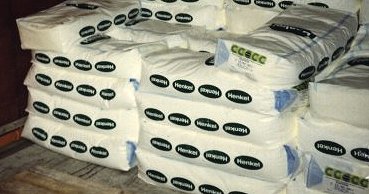It is essential to load unpalletized bagged cargo in a compact manner. Plywood or aluminum containers with a plywood liner are to be preferred to corrugated steel containers. When inspecting fitness for loading, one very important point is to check for the absence of pointed or sharp-edged parts which could damage the cargo; even small splinters of wood on the container floor, residues of old cargo securing material, protruding nail ends or the like may cause such damage. If such sources of damage cannot be eliminated, they should be carefully covered over. It is often recommended to pack bags in a crisscross arrangement. This ensures good stability within individual stacks, but not an interlocking stow. Labor costs are higher because the bags have to be rotated or alternately positioned in different directions.
 |
 |
| |
Non-interlocking stow:
alternate longitudinal and crosswise packing |
However a cargo is packed, an interlocking stow must be created in some way. This can be achieved by including "anchors" in the stow. These anchors may take the form of wooden dunnage boards, walking boards, plywood sheets and similar materials inserted as interlayer dunnage. In the case of bags with very smooth surfaces of plastic or plastic-coated paper, anchors may also consist of grayboard, kraft paper or the like. Application of antislip sprays may also be of assistance.
 |
 |
Absence of anchors promotes bag slippage. |
In this case, the bags were simply stacked in a "tower" without any interlayer dunnage as the anchor. No interlock means no stability.
|

